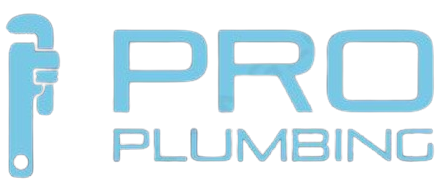Your kitchen is one of the busiest areas in your home, and it’s where plumbing plays a vital role every day. From faucets and sinks to garbage disposals and dishwashers, a lot is going on behind the scenes. That’s why scheduling a kitchen plumbing inspection is one of the smartest ways to catch small problems before they turn into expensive repairs. Whether you’re planning a renovation or just want peace of mind, knowing what happens during a plumbing inspection can help you feel more prepared.
In this guide, we’ll walk you through what to expect during a kitchen plumbing inspection, why it matters, and how it helps keep your kitchen running smoothly.
Initial Assessment and Walkthrough
The inspection begins with a simple walkthrough of your kitchen. The plumber will ask questions about any issues you’ve noticed, like leaks, water stains, low pressure, or slow drains. They’ll visually inspect the kitchen for obvious signs of wear and tear.
This step gives the plumber an idea of the layout and condition of your plumbing system. It’s also a good time for you to share any concerns you’ve had so they can look deeper during the inspection.
Inspecting Faucets and Fixtures
The plumber will check your kitchen faucet, handles, sprayer, and sink for proper operation. They’ll test water pressure and look for leaks, drips, or corrosion around the fixture base. Faucets often show signs of wear before other plumbing parts, so this is an important part of the inspection.
Even minor leaks can waste a lot of water over time. Identifying and fixing these early can save you money on your water bill and prevent further damage.
Sink and Drainage System Evaluation
The kitchen sink drain and P-trap are inspected for any clogs, leaks, or buildup. The plumber will run water through the drain to check how quickly it flows. A slow drain may indicate buildup inside the pipes or a blockage further down.
They’ll also inspect the P-trap for cracks or leaks. This U-shaped pipe is important because it prevents sewer gases from coming up into your home. A damaged trap can cause foul odors or even health issues.
Checking Under-Sink Plumbing and Shut-Off Valves
Next, the plumber will take a close look under your kitchen sink. This includes inspecting pipes, joints, and shut-off valves. They’ll look for moisture, rust, corrosion, or any signs of previous leaks that may not have been noticed.
The shut-off valves are tested to ensure they turn easily and stop the flow of water properly. If they’re stuck or damaged, they may need to be replaced. Having working shut-off valves is important in case of an emergency.
Garbage Disposal and Dishwasher Connections
If your kitchen has a garbage disposal or dishwasher, these will also be checked. The plumber will inspect the hoses, clamps, and connections to make sure there are no leaks or signs of damage. They’ll also check for clogs or strange noises that may indicate internal issues.
A poorly installed or aging disposal can cause leaks or blockages. Regular checks help make sure everything is working correctly and safely.
Venting and Water Flow Analysis
Good kitchen plumbing depends on proper ventilation. Vent pipes help air flow through the plumbing system so that water can drain smoothly. The plumber will look for signs of venting issues like gurgling sounds or slow drainage.
They’ll also test water flow throughout the kitchen to make sure it’s strong and consistent. Uneven water pressure can be a sign of buildup inside the pipes or issues with your home’s overall plumbing.
Final Report and Recommendations
At the end of the inspection, the plumber will go over their findings with you. They’ll explain what they found, if there are any problems, and whether repairs are needed. You’ll receive a summary of recommendations; some may be urgent, while others could be preventative.
This final review gives you a clear picture of your kitchen plumbing system’s condition. It also allows you to plan ahead and avoid costly repairs in the future.
Why Kitchen Plumbing Inspections Matter
Kitchen plumbing inspections are not just about fixing current issues. They help spot hidden problems, improve water efficiency, and protect your kitchen from future damage. A small leak or loose connection might not seem serious now, but it could lead to mold, water damage, or high bills later.
By scheduling regular inspections, you’re taking a proactive step to protect your home and keep your kitchen in working order. Whether you’re maintaining an older system or installing new appliances, an inspection ensures your kitchen plumbing is safe and efficient.
Frequently Asked Questions
Q1: How often should I schedule a kitchen plumbing inspection?
A: It’s a good idea to have your kitchen plumbing inspected once a year, especially in older homes or if you’ve had plumbing issues in the past.
Q2: Can I do a plumbing inspection myself?
A: You can check for visible signs like leaks or drips, but a licensed plumber can detect hidden problems and perform a more thorough inspection.
Q3: How long does a typical kitchen plumbing inspection take?
A: Most inspections take between 30 minutes to an hour, depending on the size of your kitchen and any issues found.
Q4: Will the plumber fix any problems during the inspection?
A: In many cases, simple issues can be fixed right away. For more complex problems, the plumber may schedule a follow-up visit.
Q5: Is a kitchen plumbing inspection worth the cost?
A: Absolutely. Catching small issues early can prevent costly repairs down the road and keep your kitchen running smoothly.
A kitchen plumbing inspection is a smart move for homeowners who want to stay ahead of potential problems. It offers peace of mind, helps you plan maintenance better, and keeps one of the most used areas of your home functioning properly. Don’t wait for a major issue schedule your inspection today and protect your kitchen plumbing system for the long haul.
